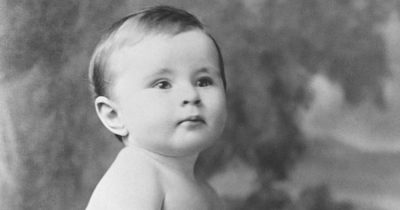
Research has been published that makes a new discovery of an old story. A well-known part of Jesus’ story is claimed to have been confirmed by it.
Keep reading to learn more.
Otangelo Grasso describes himself as a ‘Young Earth Creationist’ and ‘intelligent Design proponent.’ Grasso has written a paper in which he talks about the Shroud of Turin in great detail.
The Shroud is a length of cloth that is famous for having an image that looks like Christ on the fabric.
A lot of people think the Shroud is what Jesus was wrapped in for his burial, the three days between his crucifixion and subsequent resurrection.
Now, Grasso, with the help of AI, has made a projection of the image outline on the shroud and analyzed the blood and wound patterns found on it to see whether they might have belonged to Jesus.
Jesus was thought to have been wearing a crown of thorns on his head when he was tortured and killed.
Grasso says that the patterns from the images he used can tell us what kind of crown was used to inflict injuries.
In his study, he writes, “From the front, the crown sits below the apex and compresses the hair at the brow and temples; inward-angled thorns enter tangentially and create vertical rivulets that follow skin furrows and, at the temples, the course of trigeminal branches, echoing the Shroud’s forehead/nasion clots.”
He examines whether the crown was a cap or a circlet, concluding that it was most likely a circlet because the wounds appeared in a way that would be easier to assemble.
Grasso went on, “A helmet-like dome implies frequent superior-scalp lesions; with other head wounds still transferring at burial, one would expect traces across the bridge.”
“Their absence pushes the solution toward a low-seated circlet or shallow capiform wreath.”
Grasso’s research also posits the existence of a thorny plant which might have been used to make the infamous garment, looking at how thorns might have made the puncture pattern on someone’s forehead.
Another study by Grasso said, “Shroud head-stain mapping, a clean vertex bridge amid otherwise active head/face transfer potential, experimental inward-spine mechanics, posture-driven posterior elevation, and the build-time/manipulation differential together provide support for a circlet over a cap.”
The topic of the crown of thorns is still something which is often debated with art historians arguing that the motif of a bloodied Jesus in a crown of thorns is merely a medieval invention because of a mistranslation of the Bible. The artwork has nothing to do with Jesus at all.
While a lot of people believe in the authenticity of the Shroud of Turin, it has a controversial history that was contested even during the Medieval period. The origins of it are not known.
The earliest record for the Shroud of Turin was in 1354, when there was a mention of it being in the possession of a knight called Geoffroi de Charnay, seigneur de Lirey.
The shroud was put on display in 1389 however the Bishop of Troye called it a forgery, saying it was ‘cunningly painted, the truth being attested by the artist who painted it.’
In 1988, three separate laboratories attempted to carbon date the item and placed its origins between 1260 and 1390. It seemingly confirmed that the artefact was hence not from the time of Jesus.
However, a study in 2022, which used wide-angle X-ray scattering to analyze one piece of the shroud, showed that the fabric used may have origins from 55–74AD. However, researchers also said they would further need to study their findings.
These dates are much closer to the time of Christ and his existence, but they still do not exactly align.
What do you think of this story? Let us know in the comments section on Facebook. Share this with others who might find this story interesting.
READ MORE
- 2,000-year-old ‘Jesus boat’ offers glimpse into biblical times
- ‘Leaking’ Jesus image believed to cure cancer




